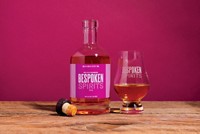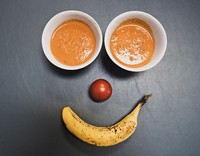Advertisement
Grab your lab coat. Let's get started
Welcome!
Welcome!
Create an account below to get 6 C&EN articles per month, receive newsletters and more - all free.
It seems this is your first time logging in online. Please enter the following information to continue.
As an ACS member you automatically get access to this site. All we need is few more details to create your reading experience.
Not you? Sign in with a different account.
Not you? Sign in with a different account.
ERROR 1
ERROR 1
ERROR 2
ERROR 2
ERROR 2
ERROR 2
ERROR 2
Password and Confirm password must match.
If you have an ACS member number, please enter it here so we can link this account to your membership. (optional)
ERROR 2
ACS values your privacy. By submitting your information, you are gaining access to C&EN and subscribing to our weekly newsletter. We use the information you provide to make your reading experience better, and we will never sell your data to third party members.
Education
Newscripts
Beer: Ancient, Space, Fried … And Troublesome
by Jyllian Kemsley
October 18, 2010
| A version of this story appeared in
Volume 88, Issue 42

As National Chemistry Week kicks off, what better topic to whet the scientific appetite than the Sci-Mix beverage of choice?
BEER CONSUMPTION, of course, goes back several millennia. It turns out, however, that the beer brewed in ancient Nubia around A.D. 450 had a little extra kick. Chemist Mark Nelson of Boston’s Paratek Pharmaceuticals, anthropologist George Armelagos of Emory University, and colleagues have found that the bones of Nubians—who lived in the region that is present-day Sudan—were saturated with the antibiotic tetracycline (Am. J. Phys. Anthropol. 2010, 143, 151).
The researchers believe that the Nubians made the antibiotic by fermenting beer with grain that contained the soil bacteria Streptomyces, which produces tetracycline. They also think that the Nubians produced the antibiotic beer intentionally. The Nubian culture revered gold and likely prized golden colonies of Streptomyces. Additionally, other ancient cultures used beer to treat disease—gum disease was a target of the ancient Egyptians and Jordanians, Armelagos says—suggesting that they knew about and propagated antibiotic qualities in the beverage.
The next frontier for beer, however, might not be on Earth. Although alcohol is banned on NASA space missions and in the International Space Station, companies developing space tourism programs are anticipating demand for a broader menu. Next month, Astronauts4Hire will test a stout, made by Australia’s 4 Pines Brewing, on zero-gravity flights.
“Your tongue swells when you’re out in space so therefore you lose a lot of the ability to detect flavour, so we’ve come up with a beer recipe that has a lot of body and full flavour,” 4 Pines owner Jaron Mitchell told the Brisbane Times.
He added that burping is also a different experience without gravity. “When you’re on Earth, the gravity actually separates the air and the liquid such that if you burp, you burp the air, whereas when you’re just floating around in space you can do what’s called wet burps, which are little suspended balls of liquid just hovering around,” he said.
In other beverage advances, beer can now be added to the seemingly endless list of things that people will fry. Mark Zable of Plano, Texas, debuted his fried beer concoction last month at the Texas State Fair, where he won the “Most Creative” Big Tex Choice Award.
As you might imagine, beer and hot oil don’t mix, so Zable encases the beer in a pocket of pretzel dough. The result is something akin to beer ravioli. The ravioli are bite size, so you can pop a whole one in your mouth, Zable says. He has applied for a patent on the secret process he uses to produce the beer pockets.
Before you’re inspired to head off in search of your ale of choice, however, one last cautionary note: Scientists at the University of Leipzig, in Germany, have studied the cases of 405 patients who had to be hospitalized for “ethanol intoxication without trauma.” The researchers wanted to determine the risk factors and data trends involved for the unfortunate patients, who attended Oktoberfest in Munich in 2004.
After looking at level of consciousness, ethanol blood concentration, age, sex, blood pressure, body temperature, heart rate, blood sugar, and a few other parameters, the researchers found that those most likely to be hospitalized were men aged 20–29 years (Arch. Toxicol. 2008, 82, 933). It’s not clear whether the antibiotic-laced beer of the Nubians would have improved the young men’s fate.





Join the conversation
Contact the reporter
Submit a Letter to the Editor for publication
Engage with us on Twitter